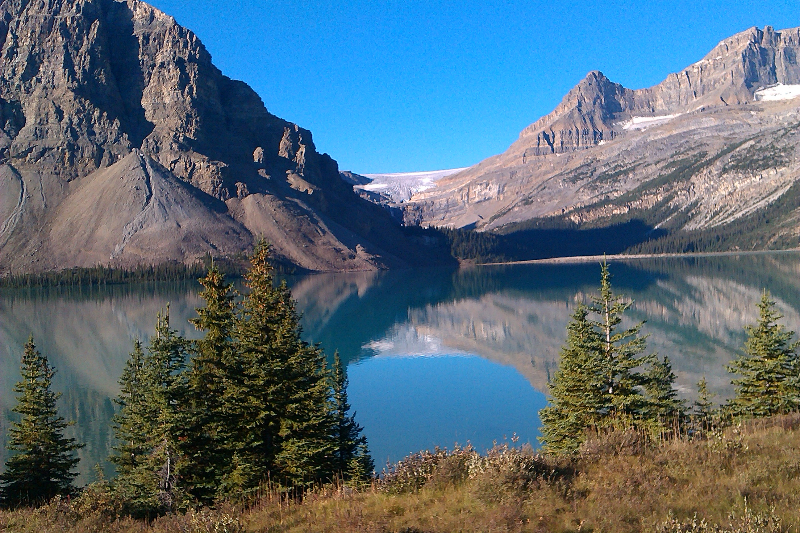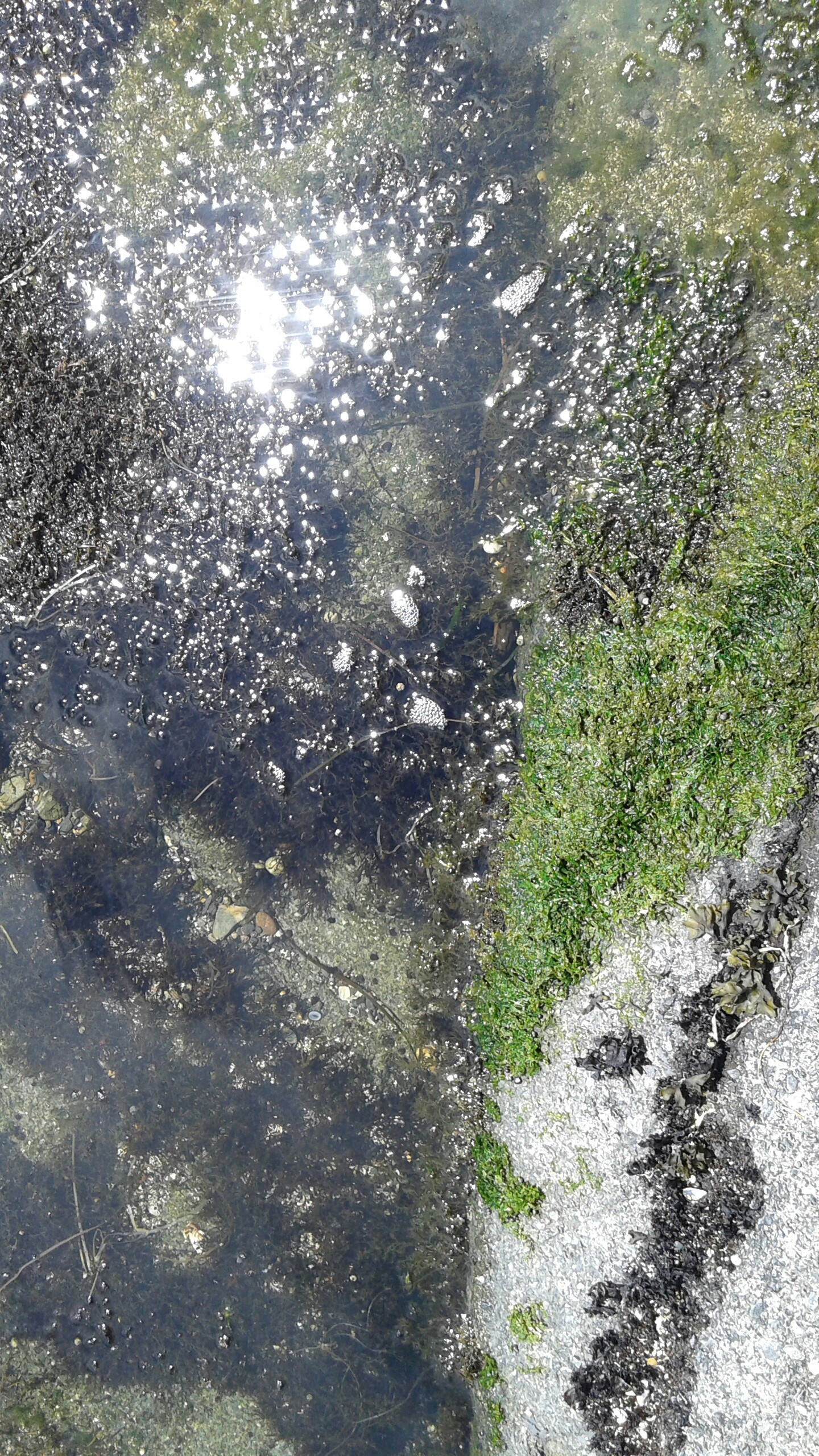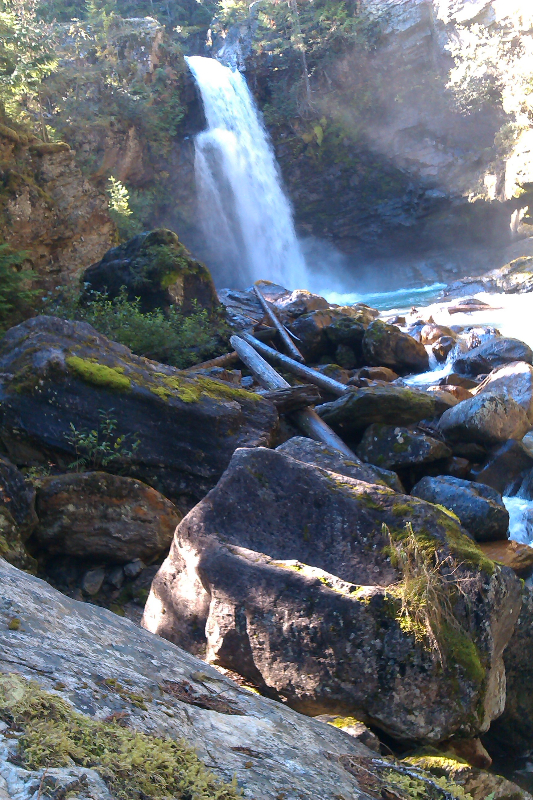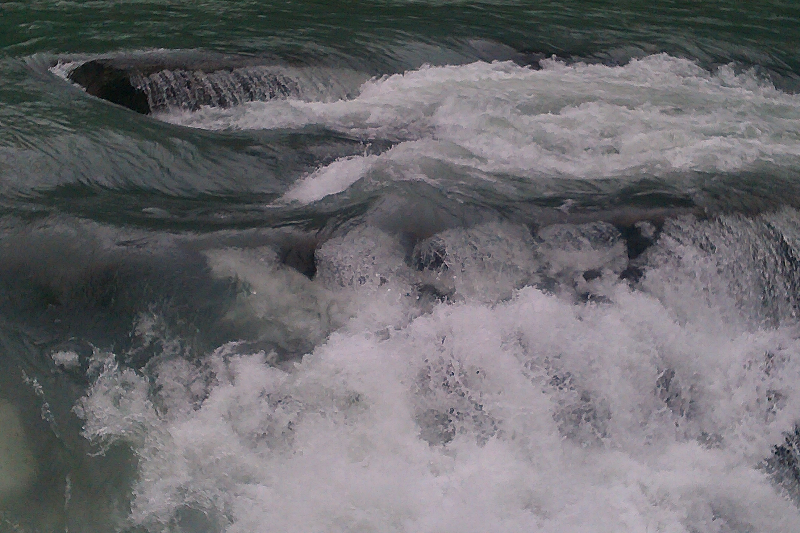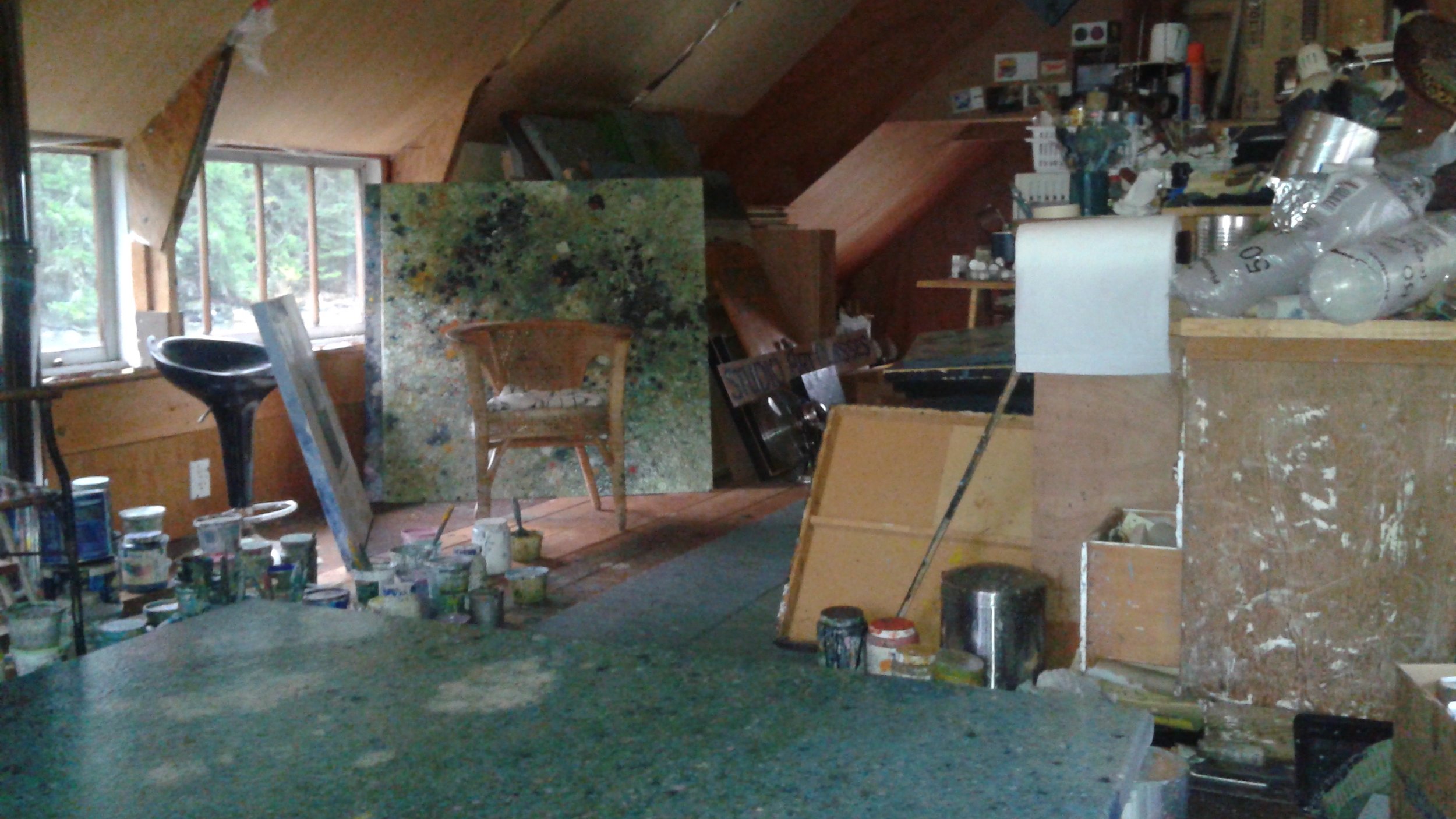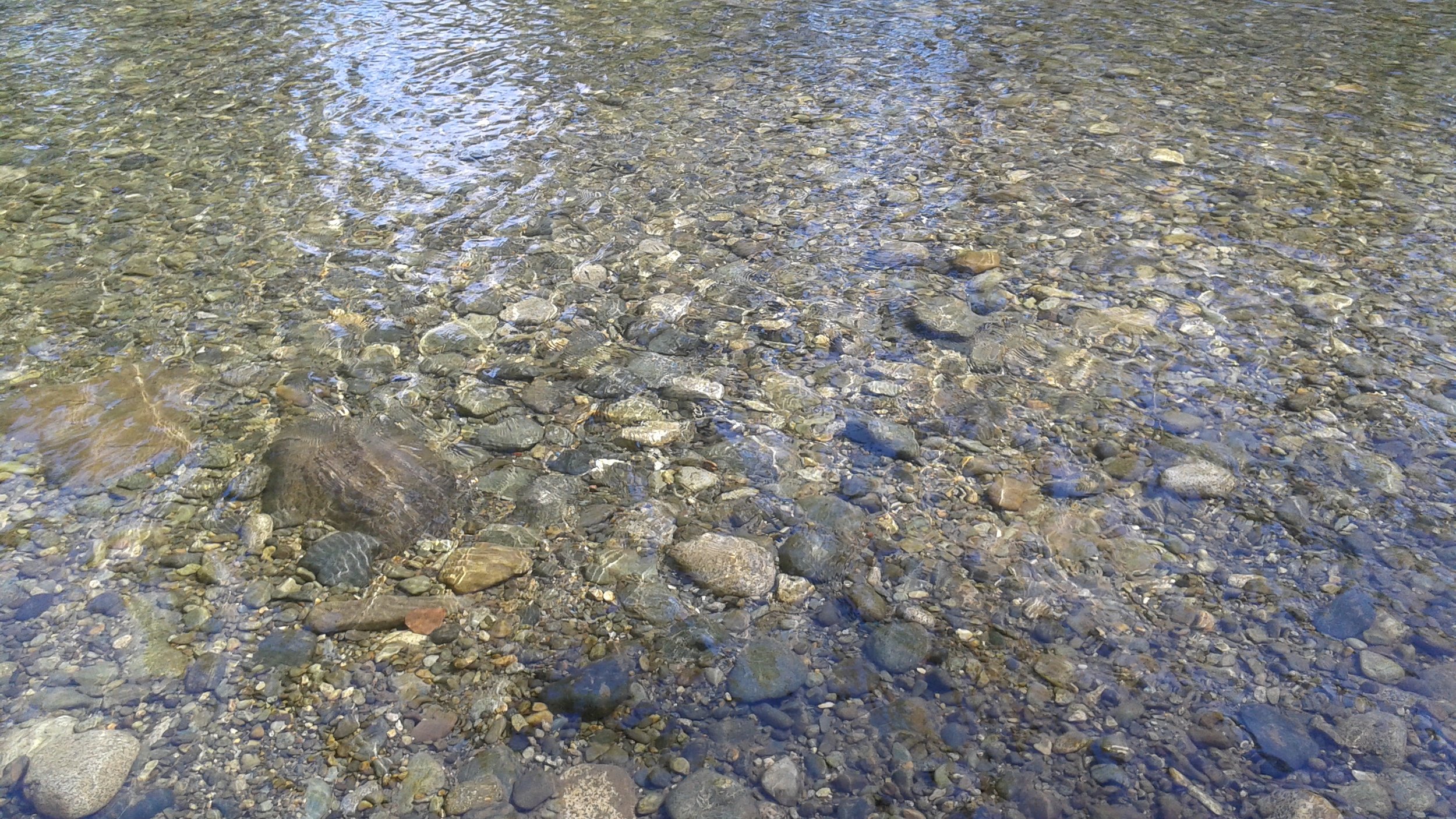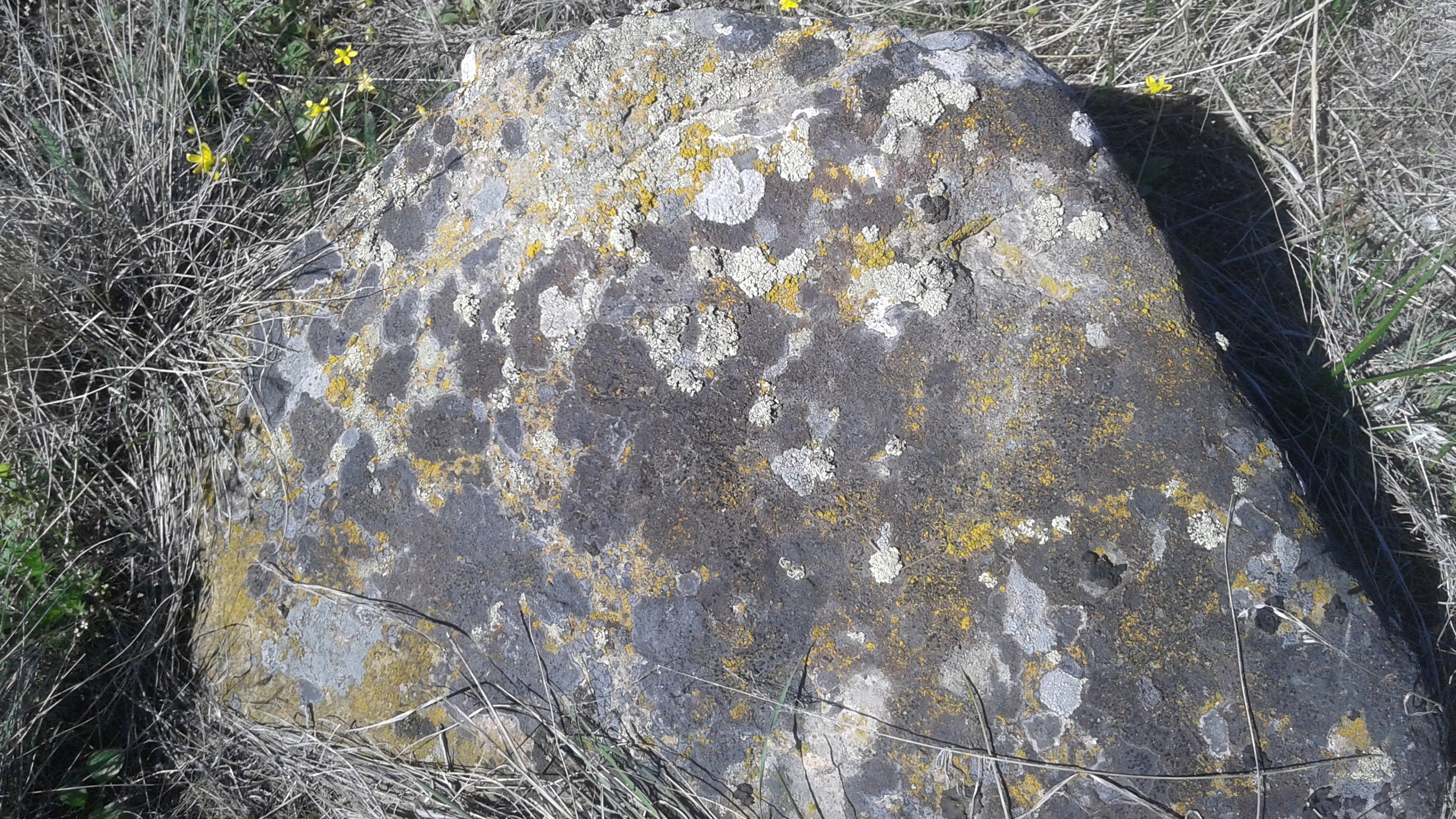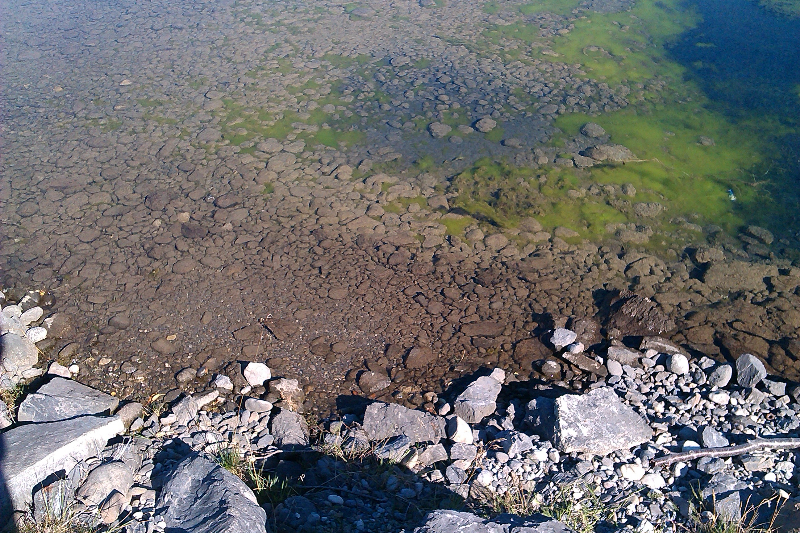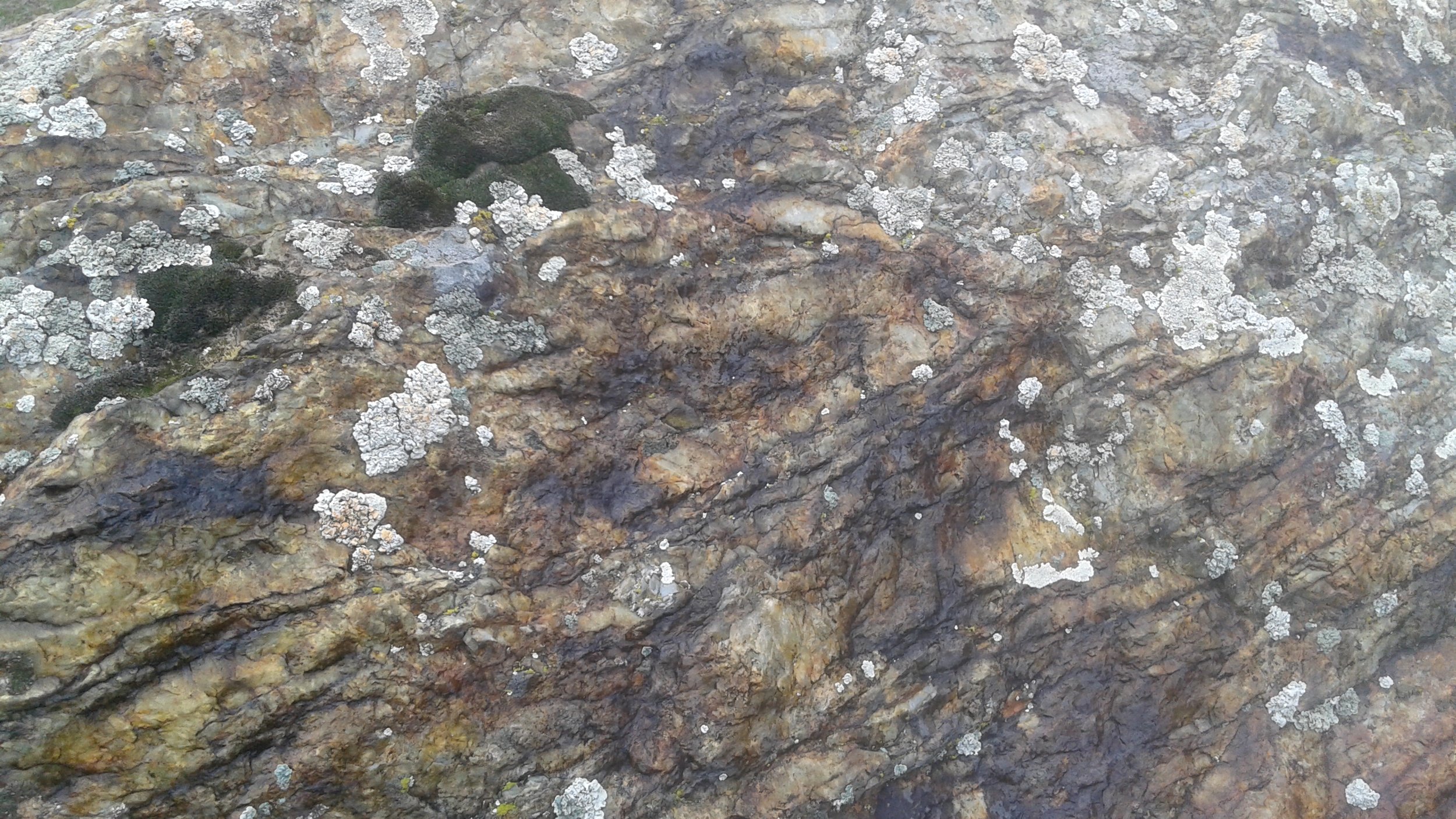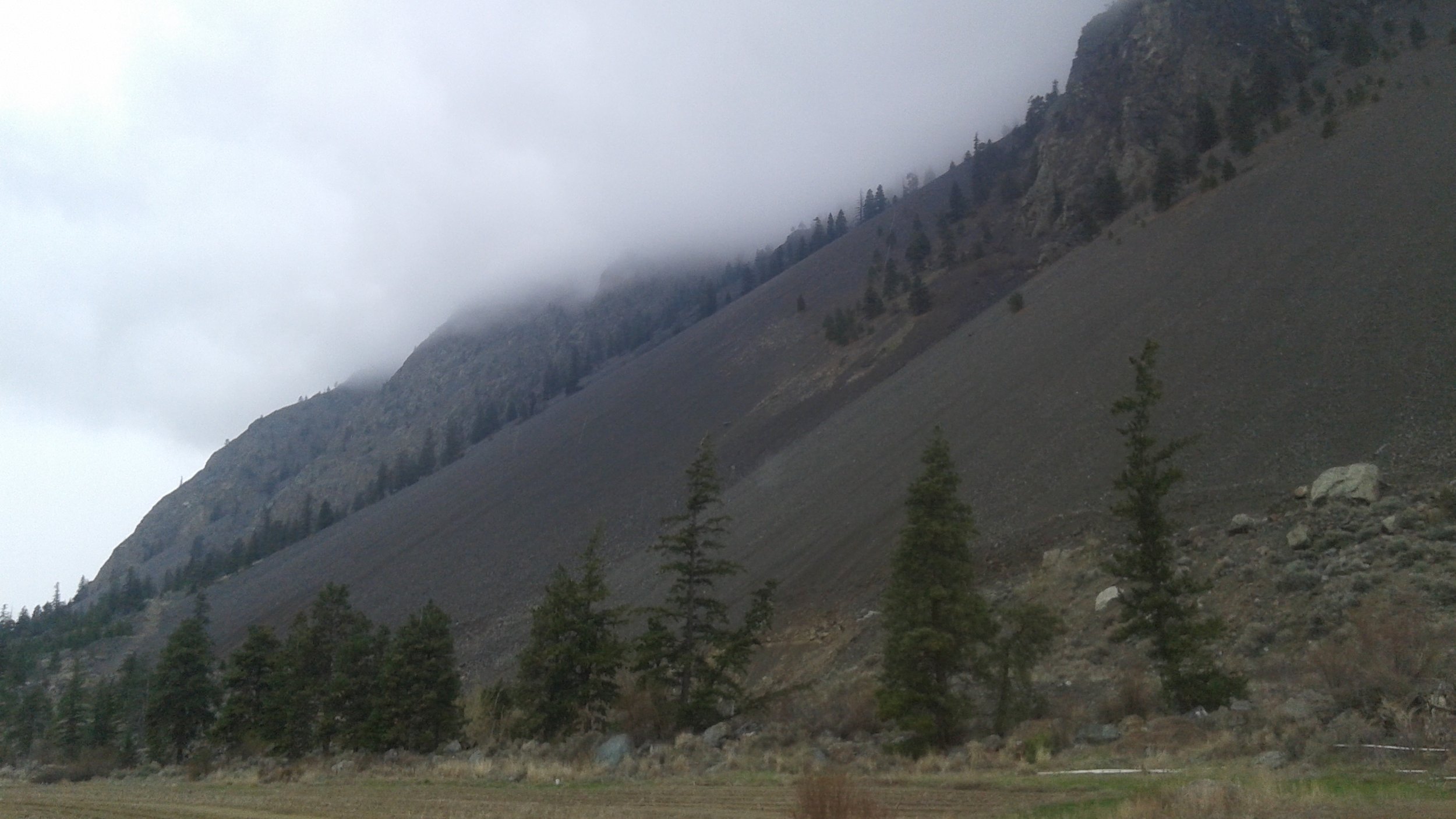Keith Chisholm's Immersive Landscapes
By Karin Cope and Marike Finlay
Heading out on Cowichan Bay, north shore
For several years we had been sailing into British Columbia’s Genoa Bay and wondering who lived in the off-grid float home at the back of the harbour. Finally we met Keith Chisholm and were invited to his sun-flooded attic studio, where we picked through stacks of paintings on board and canvas. Each painting, whether large or small, square or rectangular, was a portal to a world entire: here were, at once, nebulae and nuclei, outer space and inner space, water, stone, ash and moss.
We were stunned. Here, at the back of Genoa Bay, where we’d certainly not expected it, we’d found a painter of lively, exciting and extremely accomplished contemporary Canadian abstract landscapes.
Indeed, we believe that Keith Chisholm’s corpus constitutes a unique body of work that nevertheless fits within a recognizable tradition of Canadian abstract painting. A student of graphic design and painting at the Ontario Collage of Art in the early 1970’s, during Roy Ascott’s tenure as president there, Chisholm began to take painting classes in order to “understand colour.” Studying with painters Tom Hodgson and Graham Coughtry, among others, delivered more than the understanding Chisholm was seeking; by the time he graduated from OCA in 1972, he was passionately committed to painting. He taught for a time in Newfoundland before heading west, first to Alberta and then to British Columbia, always painting and showing new work, always investigating the landscape and the shape of contemporary painting and print-making in each space.
Today, if you ask him, Chisholm will cite Jean-Paul Riopelle and Guido Molinari as particularly strong sources of inspiration. He carries their lessons forward by making abstract landscapes that are also powerful colour studies, all-over paintings without grid or horizon lines, which nevertheless exhibit profound structure and interaction with particular places. In the center of his studio, a shallow platform rests on the floor. This is where Chisholm does his flatbed paintings, building them up out of layers of medium into which he works paint, setting up rhythms of light and dark, working from all sides and angles, pouring, spritzing, brushing, and lifting, removing all traces of a line or the passage of a hand.
On the surface, it may look as if Chisholm is working in the tradition of Jackson Pollock; the difference is that the forms in Chisholm’s work emerge as much from what he lifts back off of a piece as from what he applies. The process here matters, but it goes well beyond what you see. Around the perimeter of the paint-spattered studio a few representational works as well as several hard-edge abstracts hint at the historical origins of Chisholm’s works and his manner of working.
For much of the last decade, Chisholm has painted in the shadow of Mount Tzouhalem, beneath a sheer stone cliff surrounded by water, lichens, moss and enormous firs and cedars. He also takes regular trips into wilder landscapes, where he makes numerous plein air and acrylic sketches; these serve as the experiential, immersive ground from which he later builds up his abstracts in the studio. Chisholm’s prolonged and repeated entry into and contemplation of particular geographies is thus the first step in a lengthy process that permits him to rarify details and seize a perceptual or phenomenological “essence” of a place, all the while elaborating a formal painterly structure and balance.
The work that we finally chose to purchase from Chisholm was inspired by a prolonged period that he spent along the banks of the Gunn Creek following a forest fire in Crowsnest Pass, where he was keen to observe the process of regeneration year after year. In our painting, the blues, greens, creams and ochres of new vegetation, clear waters and snow-melt are layered in many coats of acrylic and gloss medium. Underlying this colour is a shadow of a hard edge, a square of black jewels, carbonized remnants of the burn. Paradoxically and amazingly, these blacks light up the image.
Living at the back of Genoa Bay, off-grid, has given the artist time and space, both figuratively and literally, to contemplate each composition many times; to let each rest and then return to it to add additional layers. These accretions of paint over time create a lustrous textural depth in each work, as though one were looking deep into the waters of the bay or through a dense rainforest.
For us, Keith Chisholm’s painting is imbued with a sense of the sacred, and speaks to the hopeful patience of an ecological sensibility. It grows from a profound acquaintance with, and a great love for the diversity and complexities of Canada’s landscapes. We note that Chisholm is ecological even in his use and disposal of materials. The sparse fresh water with which he rinses his brushes is left to settle in a jar, then re-purposed as a wonderful complex grey. Here, as elsewhere, nothing is wasted in Keith’s perception and metabolization of the landscape; everything is recycled in the elaborations of his painterly interface with the Canadian wilderness. Thanks to him, we may learn to see and understand it... and the aesthetic pleasures of paint... anew.
ABOUT THE AUTHORS
KARIN COPE is an Associate Professor of Art History and Critical Studies at NSCAD University.
MARIKE FINLAY is a retired professor of Comparative Literature and Cultural Studies at McGill University and an avid collector of contemporary Canadian art.

